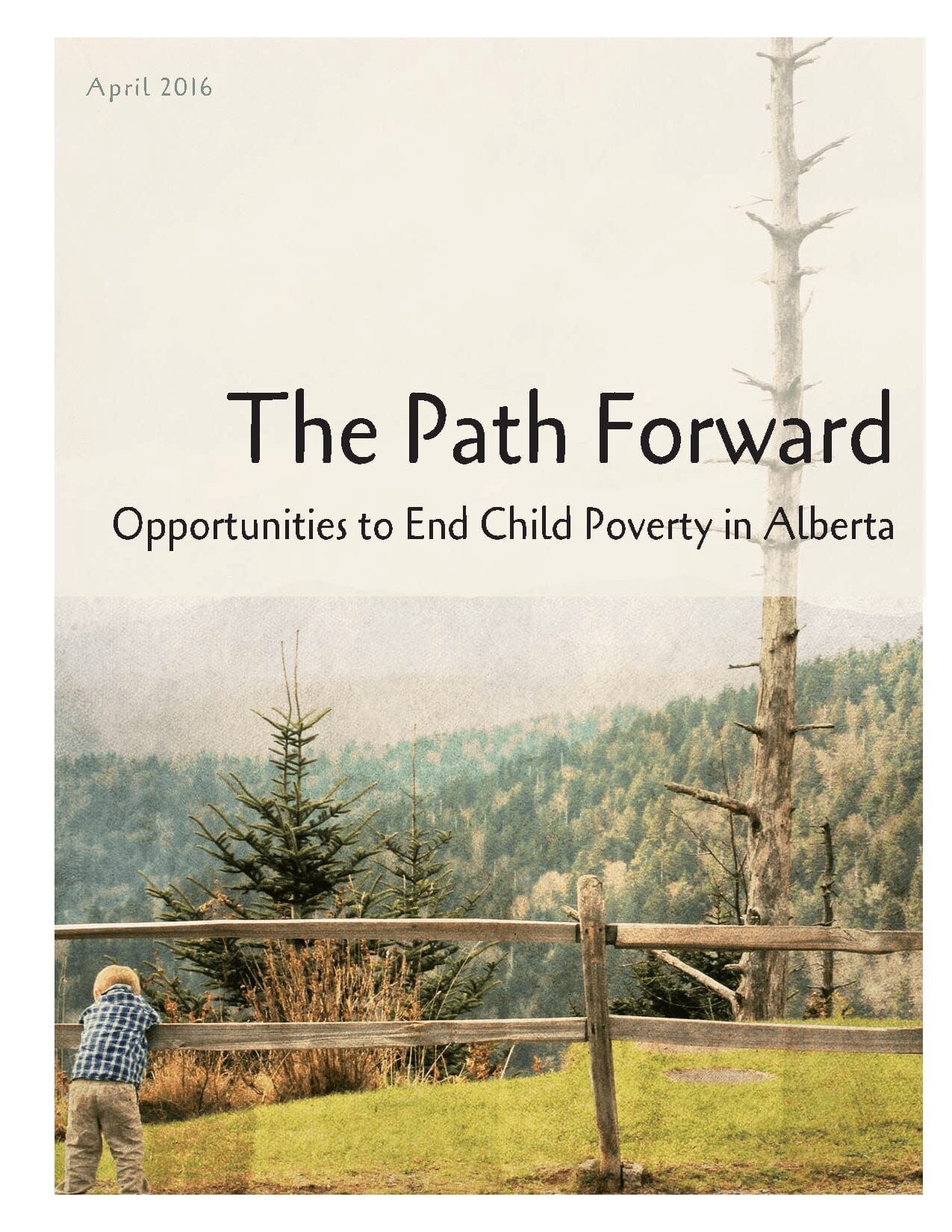
For Immediate Release
New Report Highlights the Path Forward to Ending Child Poverty
The Edmonton Social Planning Council, the Alberta College of Social Workers, and Public Interest Alberta released a new report, “The Path Forward: Opportunities to End Child Poverty in Alberta” on the eve of the Alberta government’s 2016 budget.
“Along with other Albertans, we await details of the government’s budgetary plans,” said John Kolkman, Research Coordinator for the Edmonton Social Planning Council. He noted that in terms of and poverty reduction, a number of key initiatives were announced in the October 2015 budget and are already being implemented. The most substantial of these is a new $195 million investment in an Alberta Child Benefit (ACB) beginning on July 1, 2016.
The new ACB will directly add $1,100 per child to the annual incomes of Alberta’s poorest families, with an additional $550 per year for each of the next three children. “Anti-poverty groups have urged the province to adopt such a benefit for years. This is going to make a big difference to Alberta’s child poverty reduction efforts,” said Kolkman.
235,000 Alberta children are eligible for the new ACB. 144,850 children in Alberta lived below the poverty line in 2013 (the most recent year data is available). This means the ACB and an enhanced Alberta Family Employment Tax Credit will also help children in working families with incomes just above the poverty line.
The federal government is also introducing a new Canada Child Benefit with enhanced benefits for low and middle income families. Combined, these complementary provincial and federal benefits could lift about a third of Alberta’s children out of poverty. They are also a good starting point toward a basic income for families with children, Kolkman noted.
The report shows that Alberta’s income inequality has increased faster than the national average, with the top 1% of earners seeing real income gains of 72.1% since 1982 while the bottom half of income earners only saw a small gain of 10.4%.
Over 362,000 Albertans work for wages less than $15 per hour, of which 59.9% are 25 years and older. Moreover, 64.5% of those making less than $15 per hour are women, and women still only make around 60% on average of what a man earns. “Raising Alberta’s minimum hourly wage to $15 per hour by 2018 is key to helping end poverty among those in the paid workforce,” emphasized Joel French, Executive Director of Public Interest Alberta.
French also noted that even with the revenue adjustments to income taxes, Alberta continues to generate the lowest amount of tax revenue of any Canadian province. “As of October 2015, if Alberta had the same tax system as the next lowest province, the Alberta government would generate an additional $8.5 billion in tax revenue. If the government does not address its massive revenue shortage in the near future, its ability to implement new measures to tackle child poverty will be severely limited.”
“Despite the economic downturn, for the sake of our children and economic future, Alberta must keep investing in priorities like early learning and child care, affordable housing, and mental health,” French concluded.
For more information please contact:
John Kolkman, Research Coordinator, Edmonton Social Planning Council
(587) 989-4442
johnk@edmontonsocialplanning.ca
Joel French, Executive Director, Public Interest Alberta
(780) 893-9379
communications@pialberta.org


